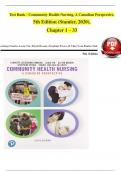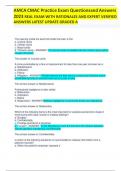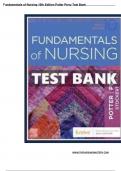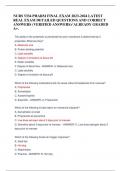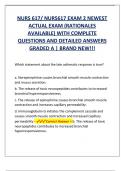Exam (elaborations)
Community Health Nursing A Canadian Perspective, 5th Edition TEST BANK by Stamler, Verified Chapters 1 - 33, Complete Newest Version
TEST BANK For Community Health Nursing A Canadian Perspective, 5th Edition by Stamler, Verified Chapters 1 - 33, Complete Newest Version Community Health Nursing A Canadian Perspective, 5th Edition TEST BANK by Stamler, Verified Chapters 1 - 33, Complete Newest Version Community Health Nursin...
[Show more]
